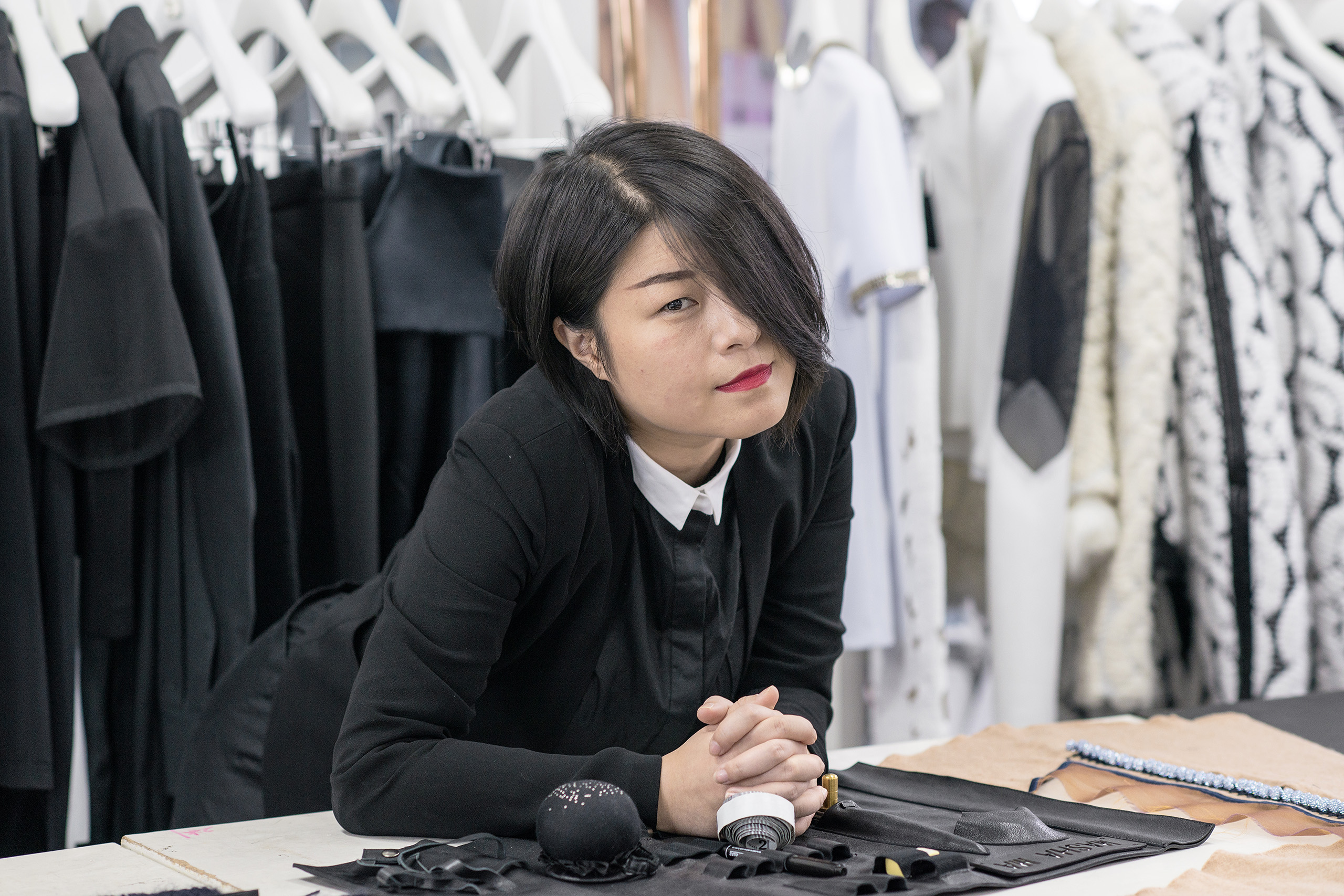The label “Made in China” doesn’t suggest high-end design. Masha Ma is determined to change that. Just two years after returning from the ateliers of Europe, the Chinese fashion designer is leading a crusade to revitalize the image of Chinese design, both abroad and at home. “I want to change the conversation from ‘Made in China’ to ‘Designed in China,’” she says. “It’s time for an international brand from China to succeed.”
China looms in the world’s imagination as both an endless factory floor and a voracious consumer of natural resources. Neither stereotype denotes innovation. But just as Japanese designers like Issey Miyake and Rei Kawakubo rescued an oriental aesthetic from exoticism decades ago, Ma is propelling Asian fashion into the future. Lady Gaga and Naomi Campbell have worn the 29-year-old designer’s namesake designs. This year, Ma, will open a dozen Ma By Ma Studio stores in China, aiming to compete on home turf with global luxury labels.
With half of her face hidden behind a curtain of hair, Ma defies the typecast of a brash, arriviste China. Her color palette is muted and avoids the cliché of China red. “I don’t go for dragons and phoenixes,” Ma says. Instead, geometry animates her designs: one of Ma’s recent collections was inspired by a museum designed by Chinese-American architect I.M. Pei.
For much of its lifespan, the People’s Republic regarded fashion, like jazz or capitalism, as a decadent frippery. “The Beijing of my early childhood was still very Soviet, very gray,” Ma recalls. At the age of 12 she spotted an article in the Chinese edition of Elle on the late designer Alexander McQueen; thrilled by his innovative designs, her compass shifted. As a teenager, Ma won a coveted spot at Central Saint Martins school of art and design in London and later interned with McQueen himself.
Her grandmother, born in a pre-communist Shanghai that reveled in its international identity, remained an inspiration. “Even during the worst years of Mao and the Cultural Revolution, she never lost her sense of style,” says Ma. “I design for people like her, who don’t shout for attention but who are never silenced.”

Ma’s debut collection at Paris Fashion Week in 2012 won accolades. As her reputation grew in Europe, her homeland was increasingly eager for aesthetic inspiration, and the Chinese nouveaux riches were willing to spend. “This is going to be one of the fashion centers of the world,” Ma says. “It’s like a retail explosion.”
In 2013, Ma moved back, opening a studio in Shanghai, where her success is an inspiration to other young Chinese designers. “Masha has transformed the Chinese element into an international language,” says Ma’s head designer, Jerry Li, who knew he wanted to work for Ma as soon as he graduated from fashion school.
Within a few years, Ma hopes to launch 100 boutiques nationwide, focusing on cuts that flatter Asian physiques in ways that might be more challenging for European houses. “She is incredibly mature for her age in her approach to business,” says Angelica Cheung, editor-in-chief of Vogue China. Ma is also designing uniforms for China’s Olympians. Outside her studio, rain falls, obscuring both traditional lane houses and glistening skyscrapers. “My traditions come from both the East and the West,” says Ma. “That’s the new China.”
- Donald Trump Is TIME's 2024 Person of the Year
- Why We Chose Trump as Person of the Year
- Is Intermittent Fasting Good or Bad for You?
- The 100 Must-Read Books of 2024
- The 20 Best Christmas TV Episodes
- Column: If Optimism Feels Ridiculous Now, Try Hope
- The Future of Climate Action Is Trade Policy
- Merle Bombardieri Is Helping People Make the Baby Decision